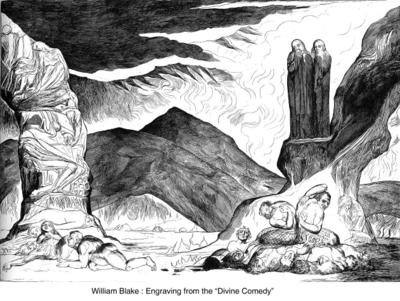
Its sometimes difficult to determine when an etching is complete. In our minds eye we have a picture of what we think it should look like and move toward that picture during production. Sometimes though, unexpected ideas, mistakes or lucky accidents occur which may dramatically change the appearance of a work.
I think the etching is now almost finished or near enough to it. I am quite happy with the shaded areas on the ground surrounding the trees. The tattooed figure walks into the image and away from the computer monitor laying in Shadow in the right foreground.
I have called the work , "The lines are Drawn." The title is an obvious reference to drawing lines on a plate but also a reference to a battle. It is a call to arms for all of the printmakers who are fighting to save the last vestiges of the traditional printmaking from the clutches of digital art. I have nothing against the rise of digital but I do object to the disappearance of traditional forms of art at its expense.




